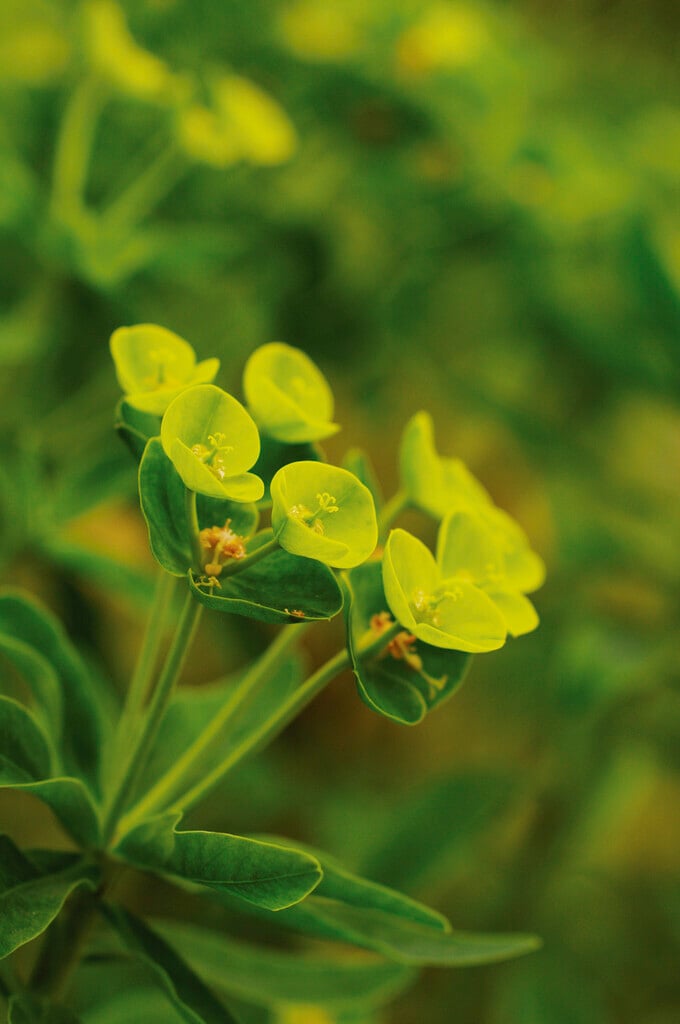Euphorbia dendroides
A tender, deciduous semi-succulent shrub with red, woody, branched stems to 2m (6½ft) high and across, forming a canopy when mature. The simple leaves are green and produced in whirls at the ends of the branches and change to fiery red and orange in autumn before falling. Clusters of bright green-yellow floral bracts are produced in spring on the tips of the stems, which then branch into two below the old flower heads, once flowering has finished. Being frost-tender and growing to a large size, this makes it useful for growing as an architectural specimen plant for a frost-free conservatory, greenhouse or large, sunny room indoors
Size
Ultimate height
1.5–2.5 metresTime to ultimate height
5–10 yearsUltimate spread
1.5–2.5 metresGrowing conditions
Moisture
Well–drainedpH
Acid, Alkaline, NeutralColour & scent
| Stem | Flower | Foliage | Fruit | |
| Spring | Red | Yellow Green | Green | |
|---|---|---|---|---|
| Summer | Red | Green | ||
| Autumn | Red Brown | Red Orange | ||
| Winter | Red Brown |
Position
- Full sun
Aspect
South–facing or West–facing or East–facing
Exposure
ShelteredDrought resistance
Yes Hardiness
H2Botanical details
- Family
- Euphorbiaceae
- Native to GB / Ireland
- No
- Foliage
- Deciduous
- Habit
- Bushy
- Potentially harmful
- Humans/Pets: IRRITANT to skin/eye, harmful if eaten. Wear gloves and other protective equipment when handling. For further information and contact numbers regarding pets, see the HTA guide to potentially harmful plants
- Genus
Euphorbia can be annuals, perennials, shrubs or succulents, with milky sap and small flowers held within cupped, often colourful bracts
- Name status
Correct
- Plant range
- Mediterranean
How to grow
Cultivation
Grows best in containers in a frost-free location in well-drained soil, in full sun. Watering should be moderate over winter to avoid soil remaining too wet for too long and the roots rotting. See Euphorbia for further advice
Propagation
Propagate by cuttings in spring or early summer; dip cut surfaces in charcoal or lukewarm water to prevent bleeding
Suggested planting locations and garden types
- Mediterranean climate plants
- Patio and container plants
- Conservatory and greenhouse
Pruning
Pruning group 1 - minimal pruning is required, as the shrub develops naturally into a neat dome shaped bush.
Pests
Generally pest-free
Diseases
Generally disease-free
Get involved
The Royal Horticultural Society is the UK’s leading gardening charity. We aim to enrich everyone’s life through plants, and make the UK a greener and more beautiful place.
